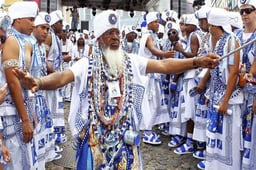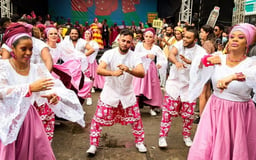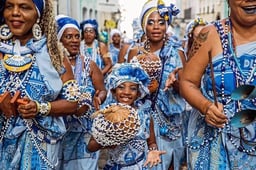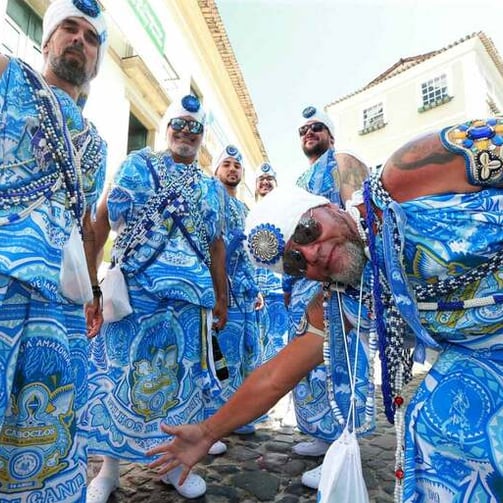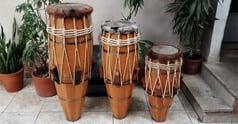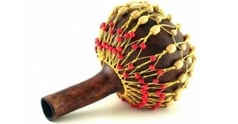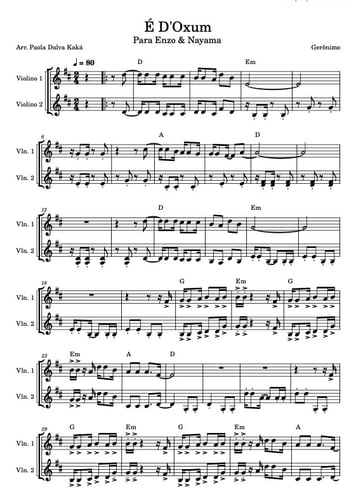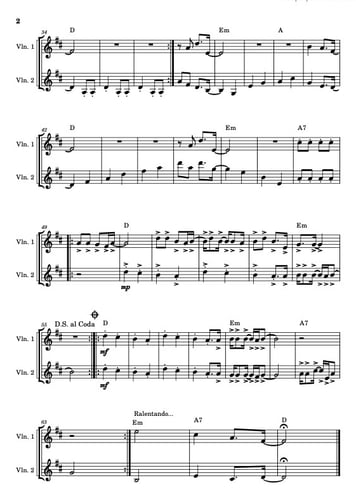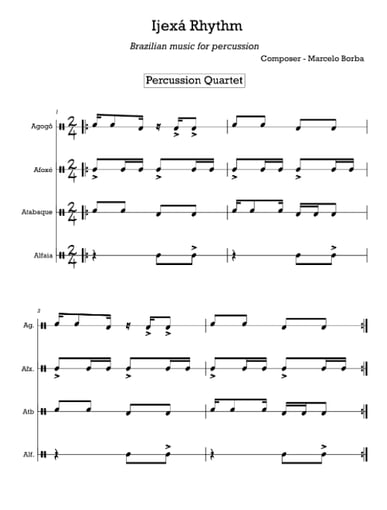ijexá
States: Alagoas, Bahia, Ceará, Maranhão, Paraíba, Pernambuco, Piauí, Rio Grande do Norte, Sergipe
Overview: Known for its African heritage, colonial architecture, and vibrant festivals, the Northeast is often considered the cultural heart of Brazil. It is musically rich with percussive traditions, religious syncretism, and deep-rooted folk rituals.


Origin: Bahia (Yoruba/Jeje roots)
Cultural Roots: Candomblé rituals (Afro-Brazilian)
Popular Music Styles:
Axé, Forró, Maracatu, Frevo
Samba de Roda, Xaxado, Baião
Afoxé and Ijexá (Afro-religious and parade music)
Key Figures
Dorival Caymmi – Bahia’s master of Afro-Brazilian songwriting
Gilberto Gil – MPB legend with deep Ijexá influence
Luiz Gonzaga – King of Baião and Forró
Maria Bethânia – Expressive interpreter of Northeastern folk
Ijexá is a traditional Afro-Brazilian rhythm with roots in the Jeje people of West Africa, particularly from the former Kingdom of Dahomey (present-day Benin). Closely tied to the Candomblé religion, ijexá is a sacred rhythm played during ceremonies for the orixás (deities), especially in the Alaketu tradition. The rhythm was brought to Brazil during the transatlantic slave trade and became deeply embedded in the cultural practices of the Northeast and Southeast regions. Played in binary meter with a strong emphasis on the second beat, ijexá is characterized by its steady, hypnotic pulse. The instrumentation typically includes atabaques (drums), agogô (double bell), xequerê (beaded gourd shaker), and sometimes the afoxé (also a shaker).
Over time, ijexá extended beyond the sacred space of Candomblé and entered Brazil’s broader musical landscape. By the late 19th century, Afro-Brazilian communities began incorporating ijexá into public street parades, giving rise to afoxé groups — ensembles that perform ijexá-based music during Carnival. Afoxé music maintained its religious roots, often featuring chants originally used in Candomblé ceremonies. The first commercial recording of ijexá was “Babaô Miloquê” by Josué de Barros in 1930. Later, ijexá would influence Música Popular Brasileira (MPB), with iconic songs by artists like Dorival Caymmi, Gilberto Gil, Caetano Veloso, and Gerônimo.
The term “afoxé” comes from Yoruba and means “the language that makes it happen.” Afoxé groups play an important role in preserving Afro-Brazilian culture, blending religious expression and music in street settings. The three key instruments are the afoxé (or agbê), a gourd wrapped in a beaded net; the agogô, a two-toned metal bell; and a trio of atabaques in different sizes. Though now most visible during Carnival, afoxé continues to carry the sacred tone of Candomblé. Its lyrics often mix Portuguese with African languages like Nagô, maintaining linguistic and cultural ties to ancestral African traditions.
A leading symbol of afoxé culture is the bloco Filhos de Gandhy, founded in Salvador in 1949 by dockworkers inspired by Mahatma Gandhi’s nonviolence. The group, exclusively male, became one of the largest and most iconic Carnival ensembles in Bahia. Members wear white robes, turbans, and beaded necklaces to honor Oxalá and Ogum — two revered orixás. Filhos de Gandhy participates not only in Carnival but also in religious festivals like Lavagem do Bonfim and Dia de Iemanjá. Beyond performance, they are involved in community activism, including social outreach and food distribution, making them a powerful emblem of cultural resistance and Afro-Brazilian pride.
Cultural Elements:
Street-Candomblé: Religious chants performed in processions
Symbol of Afro-Brazilian pride and religious syncretism
Costume: White turbans, sashes, necklaces for Oxalá and Ogum
Sources:
Biblioteca de Ritmos, sonsdobrasil.art.br
Aventura do Brasil, musicaead.com.br
Main Instruments:
Atabaque (drum)
Agogô (double bell)
Xequerê (beaded gourd shaker)
Afoxé/Agbê (netted gourd instrument)
Dance:
Used in processions and parades like Carnival in Salvador. Afoxé groups, like Filhos de Gandhy, turn the streets into moving ceremonies of spiritual reverence and resistance.
Notable Figure:
Filhos de Gandhy: Founded in 1949, this afoxé bloco combines Afro-Brazilian spirituality, Gandhi-inspired peace symbols, and ijexá rhythms.
